- Motorcycles
- Car of the Month
- Destinations
- Men’s Fashion
- Watch Collector
- Art & Collectibles
- Vacation Homes
- Celebrity Homes
- New Construction
- Home Design
- Electronics
- Fine Dining
- Baja Bay Club
- Costa Palmas
- Fairmont Doha
- Four Seasons
- Four Seasons Private Residences Dominican Republic at Tropicalia
- Jacob Cohën
- Reynolds Lake Oconee
- Wilson Audio
- 672 Wine Club
- Sports & Leisure
- Health & Wellness
- Best of the Best
- The Ultimate Gift Guide

This New 90-Foot Emissions-Free Catamaran Makes Its Own Hydrogen Fuel
Sunreef says the green cruiser will have "unlimited autonomy.", rachel cormack.
Digital Editor
Rachel Cormack's Most Recent Stories
- Delta Is Opening Its First Premium Lounge at N.Y.C.’s JFK Airport This Summer
- How to Become Younger, According to a Biohacking Expert
- Can a Wearable Help Heal Trauma? This Psychiatrist Says Yes
- Share This Article

Sunreef ’s upcoming zero-emissions catamaran won’t just run on hydrogen ; it will make it, too.
Related Stories
- We Took a Ride in Porsche’s Record-Breaking 1,092 HP Taycan Turbo GT. Here’s What It Was Like.
- The New Mercedes-AMG E53 Is More Powerful Than Ever
- This 6-Wheel Formula 1 Race Car Remake Is Heading to Auction

In addition, solar cells will be built into the yacht’s entire bodywork and will continuously generate power from the sun so long as it’s shining. The Polish yard has previously featured this patented “solar skin” on a number of models, including a 100-foot sailboat , a smaller 80-foot sailer , and an 80-foot cat . The latter is equipped with 160 kW main motors that enable speeds of up to 10 knots, to give you an idea of the newcomer’s potential grunt.
Sunreef has been a pioneer of green yachting over the past 20 years. It has also become one of the world’s most popular builders of luxury catamarans, delivering vessels to former world No. 1 tennis star Rafael Nadal and two-time Formula 1 champion Fernando Alonso . Despite all the advances and acclaim, the yard’s R&D team says it will continue to push the boundaries of sustainable sailing.
“Our goal is to revolutionize the industry by offering discerning customers an exceptional zero-emission sailing experience,” Sunreef’s co-founder and chief technology officer Nicolas Lapp said in a statement. “This project represents a milestone in our ongoing commitment to protecting our oceans and preserving the natural beauty of the sea.”
Rachel Cormack is a digital editor at Robb Report. She cut her teeth writing for HuffPost, Concrete Playground, and several other online publications in Australia, before moving to New York at the…
Read More On:
- Electric Yacht
More Marine

This 29-Year-Old Is the First American Woman to Sail Around the World Solo and Nonstop

This Massive Megayacht Concept Has a Built-In 347-Foot Blimp That Lets You Steer From the Skies

This New 89-Foot Custom Catamaran Has Its Own Nap Station on the Flybridge

Tiara’s New 54-Foot Yacht Has a Deck That Transforms Right in Front of You

Culinary Masters 2024
MAY 17 - 19 Join us for extraordinary meals from the nation’s brightest culinary minds.
Give the Gift of Luxury
Latest Galleries in Marine

10 Fascinating Facts About ‘Loon,’ the 221-Foot Superyacht That Gets the Coolest Toys First

Two Oceans 870 Power Catamaran in Photos
More from our brands, moda operandi is fundraising in a tricky luxury e-commerce space, rams announce matthew stafford documentary at sxsw, elton john delivers exclusive performance and raises $10.8 million for aids foundation at annual oscars party, archaeologists in egypt unearth 12.5-foot-tall top section of ramses ii statue, this best-selling magnetic rowing machine is $185 off on amazon today.

- Green Propulsion
- Renewable Energy
- Energy efficiency
- Sustainable materials
- News & Events
- Sunreef News Magazine
- Press About Sunreef

- 60 Sunreef Power
- 70 Sunreef Power
- 80 Sunreef Power
- 100 SUNREEF POWER
- Sunreef Supreme Power
- Sunreef Ultima Range
- Sunreef 44 Ultima
- Sunreef 55 Ultima
- Sunreef 66 Ultima
- Sunreef 77 Ultima
- Sunreef 88 Ultima
- Sunreef fleet

- SUNREEF ZERO CAT
- SUNREEF 100 ECO
- Sunreef Fleet

- SUNREEF 43M
- 49M SUNREEF POWER
- 210 Sunreef Power Trimaran
- Sunreef Explorer
- 40M SUNREEF EXPLORER
- 40M SUNREEF EXPLORER ECO
- 50M SUNREEF EXPLORER
- Superyacht Fleet
The Revolutionary Electric Catamarans Introduce Zero Emission Cruising

With greater awareness about pollution, sustainable and emission reduction practices have become increasingly salient in the maritime industry. The International Maritime Organization envisions a reduction in CO2 emissions by 40 percent by 2030 across international shipping to combat climate change.
The nautical sector has found a promising solution with the invention of electric catamarans. These vessels are powered by electrical energy, offering a more ecological, energy efficient, and environmentally friendly alternative to traditional cruising.
Making The Switch to Electric Catamarans
Electric catamarans are propelled by electric motors that draw power stored in lithium-ion batteries. These massive batteries are replenished by solar panels, wind turbines, hydrogenators, or a combination of all, allowing electric catamarans to ply oceans with an extended range.
Sunreef Yachts Eco remains at the forefront of eco-friendly responsible yachting with their electric sailing and power catamarans . The shipyard has made impressive strides in pursuing green energy generation for sailing the blue waters, including the installation of battery banks of the future and utilization of renewable energies.
What Makes Electric Catamarans Convenient?
1. questing for unpolluted waters.
Did you know that one litre of oil is capable of polluting one million litres of water ? What is more is that catastrophic oil spills only account for five percent of the total water pollution, the rest of the major chunk is avowed against engine emissions, oil leaks, and refueling from waterborne vessels. This oil contains hydrocarbons and heavy metals that damage the aquatic environment and adversely affects human health.
To avoid contamination, eco-conscious yacht builders and manufacturers, like Sunreef Yachts Eco, have launched electric catamarans that are less likely to harm wildlife or water users. With electric catamarans, there are no risks associated with spilling fuel as they need not make their way to an oil pump for replenishing.
Apart from rising concerns of water pollution, the traditional marine outboard engines are also known to have detrimental effects on marine wildlife due to the noises generated. This noise impacts breeding cycles, hinders navigation of partially sighted animals, and prevents fishes from hearing their predators. As counterparts, electric engines boast quieter operations, thus minimizing adverse effects on wildlife and making the voyages more pleasurable for yachting enthusiasts.
2. Greater Environmental Sustainability
An electric catamaran’s engine contributes significantly to a reduced carbon footprint that combats climate change effectively without releasing exorbitant levels of toxic pollutants, such as carbon monoxide, hydrocarbons, and nitrogen oxides, which deteriorate air quality.
3. Energy Efficiency
Electric propulsion systems tend to be more energy efficient than the traditional internal combustion engines. This is because the extraction of fossil fuels from deep within the Earth, refinement, transportation via great distances, and distribution to oil pumps, accounts for a staggeringly high consumption of energy.
Additionally, the overall energy efficiency of a diesel engine is often capped at 40 percent; the rest of the 60 percent is lost in the name of heat and friction. On the other hand, electric catamarans can be charged directly from the grid, providing renewable electricity, to be more environmentally friendly. This accounts for lower operating costs overall.
Sunreef Yachts Eco employs the latest in yacht building technology to ensure efficient power distribution and hull form. The lightweight hull of our electric catamarans guarantees instant power with little to no drag, resulting in least possible wasted energy.
4. Lower Maintenance Cost
Electric catamarans require relatively lesser maintenance as they boast fewer moving parts that use low friction magnetic field for operations and experience close to zero vibrations compared to internal combustion engines. They eliminate the need for winterization maintenance, oil changes, and filter, gaskets, or impeller replacements.
Alongside this, replacing greenhouse gas emitters, such as petrol and diesel, is certainly more economical. This also accounts for electric catamarans having a greater resale value on the market.
Understanding The Role of Marine Batteries
The primary reason why consumers avoided plowing waters with electric catamarans back in the day was the limited range that made variable sea states hazardous. What made the situation worse was their slow charging abilities at limited marinas around the world.
However, the electric catamarans of today offer smooth and silent operations, excellent maneuverability, and emission-free functioning. Additionally, they have torque from the second their shaft is engaged, enabling them to accelerate faster than conventional internal combustion engines.
Sunreef Yachts Eco envisions a more carbon neutral future for its catamarans. But apart from reducing emissions, the shipyard is also determined to find ways to significantly improve performance, range, and comfort onboard.
The Batteries on Sunreef’s Electric Catamarans
Sunreef Yachts Eco’s electric catamarans are equipped with custom engineered marine battery banks that offer prolonged battery life and more power despite compact size and optimized weight. With a density below 5.2kgs per kWh, these lithium-ion battery packs are recognized as 30 percent lighter than standard battery systems used worldwide. The reduced weight of the battery accounts for lesser drag, which translates to reduced energy being consumed by propulsion.
Additionally, the battery size is also smaller, leaving more room in the hulls to expand on living space. The ability to charge the batteries of this electric catamaran in harbors across the world, regardless of the voltage, adds a unique level of versatility and convenience for cruising.
It is important to note that Sunreef Yachts Eco equips each model within its range with custom marine lithium battery banks, scaling between 400 to 700V with pack sizes extending up to 1MW. Their capacity allows for nearly two days of air conditioning and house appliances use. These are fast charging, long-lasting batteries with a lifespan of up to 10 years; but even after years of service, 80 percent of the original capacity is maintained.
Utilizing Renewable Energy on Electric Catamarans
Energy regeneration onboard an electric catamaran allows them to have an unlimited range without relying on external fuel sources, making them fully self-sustaining. Installing a clean green energy production to the catamaran’s existing battery pack makes it far easier to run the essential electric components onboard.
Renewable energy produces no GHG (greenhouse gas) emissions despite powering the world’s growing fleet of electric catamarans. To protect the oceans, here are the three major renewable energy types that can be harnessed onboard an electric catamaran:
1. Solar Power
The utilization of solar energy on electric catamarans has proven to be a significant step in decreasing the consumption of environmentally damaging fossil fuels such as gasoline. Sunreef Yachts Eco has successfully produced its in-house engineered, patent pending technology, solar panels that can be fully integrated into the composite bodywork of the electric catamaran. The energy produced is stored in lithium-ion batteries.
These are the industry’s lightest solar panels, that can be mounted on the superstructure, hull, or mast, for maximum power generation. In general, multihulls offer a more stable platform for accommodating a large solar array in comparison to monohulls.
2. Marine Wind Turbines
Marine wind turbines (also known as wind generators or wind chargers) are mounted atop catamarans to maximize the conversion of kinetic energy of air in motion to electricity. This in turn keeps the battery banks charged in the absence of solar power; hence playing a vital role in the energy mix of electric catamarans.
It is generally a stable source of power throughout the day, regardless of whether the vessel is docked or under navigation. That being the case, the more wind pressure the catamaran encounters, the more power the turbines produce. Overall, wind turbines significantly reduce operational costs by minimizing fuel consumption.
3. Hydro Generation
Hydro generation allows you to create power whilst sailing in an electric catamaran. Simply put, harvesting the momentum of waves converts kinetic energy into electrical energy, which can later be fed into batteries to supply electricity to the ship.
Sunreef Yachts Eco redesigned their sailing catamarans to draw power from the energy of waves rather than fossil fuels. Because regeneration can even come from the free spinning of propellers when the boat is under sail, it proves to be a viable method for procuring clean, green energy. Additionally, it has proven to be highly efficient on electric catamarans produced by the shipyard as the electric power can be recovered from two engines.
How Innovative is Sunreef Yachts Eco?
During recent years, the Polish shipyard , Sunreef Yachts Eco has grown increasingly aware of the urgency of protecting the environment. Our research and development team has launched ground-breaking inventions in the yachting industry with greener tech, efficient design, and cleaner manufacturing processes.
Air Conditioning
For starters, electric catamarans from Sunreef Yachts Eco are the only ones to boast an energy-saving, gas-based air conditioning system, providing notable energy efficiency for a sustainable yachting experience.
This system consumes 70 percent less energy than the standard air conditioning system. Not only is it capable of running on batteries throughout the night to guarantee a peaceful sleep onboard, but also provides top-notch humidity control in tropical regions.
Smart Water Management
Because freshwater generation is crucial for sustainable cruising, Sunreef Yachts Eco installs advanced water purification systems and highly efficient watermakers onboard electric catamarans. This guarantees unlimited access to clean water which reduces the need for plastic bottles onboard.
Sunreef Yachts Eco also aims to be the first shipyard to incorporate hydrogen on its electric catamarans as a substitute to conventional energy. Combining hydrogen power with electric propulsion would enable the 80 feet sailing catamaran to achieve unrivalled autonomy for eco-conscious cruising as it powers both onboard appliances and engines.
Another ongoing project by the research and development team at Sunreef Yachts Eco is the Zero Cat , a 90 feet catamaran with unique clean, green power generation capabilities. This superyacht ’s fuel cell system will convert methanol to hydrogen onboard for zero-emissions cruising.
Future of Electric Catamarans
The idea encapsulated here is to continue making sailing more accessible for people around the world, but with minimal impact on seas and oceans. Sunreef Yachts Eco aims to commission 40 electric catamarans in 2024 that embrace latest propulsion technologies such as electric motors, advanced lithium-ion battery chemistries, and regeneration capabilities that rely heavily on renewable sources of energy to help protect the planet.
Frequently Asked Questions
Who makes electric catamarans.
Sunreef Yachts Eco is the world’s leading designer and manufacturer of electric catamarans, including both sailing and power multihulls. The shipyard is largely known for its production of bespoke luxury catamarans, stretching between 30 to 164 feet.
What is the range of the electric catamaran?
Sunreef Yachts Eco electric catamarans boast an unlimited range under favorable and sunny weather conditions. They are easily maneuvered, seaworthy vessels, with impeccable buoyancy even in rough seas. Featuring a mix of eco-energies, our electric catamarans also prove to be self-sustaining for extended periods of time.
Are there any electric powered catamarans?
In recent years, Sunreef Yachts Eco has launched several electric catamarans, powered by renewable energies for minimum ecological footprint. Furthermore, the shipyard has committed to 40 additional electric catamarans which will be launched in 2024, which includes multihulls from the newest range, the Sunreef ULTIMA .
EXPLORE OUR ELECTRIC CATAMARANS
Ultima range, next post exploring the advantages of hydrogen catamarans over yachts in a sustainable world.
Comments are closed.
SUBSCRIBE TO OUR NEWSLETTER
- Sailing Yachts
- Power Yachts
- Superyachts
- Making a Change
- Green Concept
- Eco Q&A
Copyright © 2024 Sunreef Yachts . All rights reserved.
- Whistleblowing
- Privacy Policy

Sunreef Venture S.A.
Sunreef Yachts Shipyard
ul. Tarcice 6
80-718 Gdańsk, Poland
+48 58 769 77 77

The global authority in superyachting
- NEWSLETTERS
- Yachts Home
- The Superyacht Directory
- Yacht Reports
- Brokerage News
- The largest yachts in the world
- The Register
- Yacht Advice
- Yacht Design
- 12m to 24m yachts
- Monaco Yacht Show
- Builder Directory
- Designer Directory
- Interior Design Directory
- Naval Architect Directory
- Yachts for sale home
- Motor yachts
- Sailing yachts
- Explorer yachts
- Classic yachts
- Sale Broker Directory
- Charter Home
- Yachts for Charter
- Charter Destinations
- Charter Broker Directory
- Destinations Home
- Mediterranean
- South Pacific
- Rest of the World
- Boat Life Home
- Owners' Experiences
- Interiors Suppliers
- Owners' Club
- Captains' Club
- BOAT Showcase
- Boat Presents
- Events Home
- World Superyacht Awards
- Superyacht Design Festival
- Design and Innovation Awards
- Young Designer of the Year Award
- Artistry and Craft Awards
- Explorer Yachts Summit
- Ocean Talks
- The Ocean Awards
- BOAT Connect
- Between the bays
- Golf Invitational
- Boat Pro Home
- Pricing Plan
- Superyacht Insight
- Product Features
- Premium Content
- Testimonials
- Global Order Book
- Tenders & Equipment

Sunreef Yachts reveals first images of new zero-emission catamaran in development
Polish yard Sunreef Yachts has released the first images of its zero-emission catamaran named the Zero Cat. By producing clean hydrogen, the shipyard reaffirms its commitment to discovering "cleaner and greener yachting solutions".
Currently in development with Sunreef's R&D department, the new sailing superyacht will measure in excess of 27.4 metres and aims to combine hydrogen power with electric propulsion for a new standard of eco-conscious cruising. It will generate net zero emissions, no nitrogen oxides or sulfur oxides.
According to the yard, the Zero Cat will house a hydrogen generator to produce its own hydrogen sourced from green methanol on board, which will be used to power the majority of the yacht's energy requirements. Other advantages include low noise and vibration levels.
Additional green power will come from an onboard solar power system, with solar cells built into the hulls and superstructure.
The mix of power feeds into a fuel cell system used to generate zero-emission energy for both the electric propulsion and hotel load, including the air conditioning, watermakers and onboard electronics.
"Our goal is to revolutionise the industry by offering discerning customers an exceptional zero-emission sailing experience," Sunreef co-founder and CTO Nicolas Lapp said in a statement. "This project represents a milestone in our ongoing commitment to protecting our oceans and preserving the natural beauty of the sea."
The Zero Cat follows a series of new project announcements from Sunreef, including a new hybrid power catamaran range known as Ultima and a new 33M Explorer Eco model with transpacific capabilities. The yard also has 13 orders currently on order, according to BOATPro , with deliveries extending until 2025.
Similar yachts for sale
More stories, most popular, from our partners, sponsored listings.
Outremer 45
Outremer 4x, outremer 4.zero, outremer 52, outremer 55, outremer 51, outremer 5x.
- All the Outremer Fleet
- Personalized support
- Blue Water Sailing Seminars
- Our concept
- The Outremer team
- Our commitments
- Construction principles
- Our catamaran services
- After-sales customer service & Quality control
- Offshore Connected Catamaran Maintenance
- Concierge Services
- Our owners’ stories
- FAQ – Outremer catamarans

- Brokerage: used catamarans for sale
- Privacy Policy
- Legal Notice
- Grand Large Yatching
Our catamaran models
From 48 to 60 feet, seaworthy, fast and comfortable, with no compromise on safety: each model remains faithful to the Outremer DNA.
And because every sailing project is unique, we recommend that you contact us to get a better idea of which model best suits your unique needs.
The ideal single-handed catamaran
Easy to handle, very agile and perfectly safe, she will take you to the next anchorage or to the far side of the world in complete safety.
Download the brochure
The performance catamaran.
Out of the molds of the 45, the 4X benefits from significant weight savings, and a rig optimized for performance. She is designed for demanding sailors and racers who also want to enjoy a comfortable life on board.
Our electric catamaran paving the way for green sailing
The Outremer 4.zero is the first series cruising catamaran equipped with a 100% electric motor. Without fossil fuel on board (diesel or gas), it can be used without any CO2 emissions. Designed for long distance sailing, its ability to produce energy by the engines when the boat is sailing gives it autonomy without limits other than the weather.
The ultimate family cruiser
Combining performance and load capacity, this best-seller of the Outremer range with multiple international awards is the top standard of cruising catamarans for families around the world…

Our 52-foot catamaran, the best of two iconic models
The Outremer 52 has been designed based on the observation of the owners’ needs and uses. While performance and safety have always been the basis for the design of Outremer catamarans, simplicity of navigation and quality of life on board are the two essential components that completes the specifications of Outremer teams.
Ideal ocean-going catamaran with a concentration of know-how
Can’t decide between comfort and performance? The latest addition to the Outremer range is the ultimate answer, offering a quality of life never before seen at this level of performance…
The very best of performance and comfort united
The Outremer 5X is the largest cruising catamaran that can be easily handled by two people. For connoisseurs who want to devour the miles in the greatest comfort.
Impatient, not sure you can invest in a new catamaran or simply curious? See our latest second-hand boats on offer. Please note that the demand is high, don’t wait to contact us.

Which model best suits my needs?
We are here to help you choose the model that best suits your desires and needs, so don’t hesitate to get in touch.
Solar power
Electric boats.
- Electric Yachts
ZEN Yachts sells its first ZEN50 electric catamaran featuring solar roof, automated wingsail, and plans for Starlink internet
Infant electric boat manufacturer, ZEN Yachts, has announced its first US order for its flagship ZEN50 solar electric catamaran . The zero-emission sailing yacht is currently under construction in Europe and will arrive with some pretty luxurious features including two kitchens, a high-tech fully-automated wingsail, and Starlink internet from SpaceX.
ZEN Yachts is short for “Zero Emission Nautic Ltd. – an ocean-friendly boat manufacturer founded in 2021 and incorporated in Malta. To help propel the popularity of zero-emission yachts both on and off the water, the company has combined wind sailing with electric propulsion.
That begins with the ZEN50, the company’s recently announced 50+ foot solar electric catamaran currently being built near Barcelona, Spain. The 12-passenger electric yacht features 2 x 40kW brushless DC motors, powered by a 160 kWh lithium battery pack.
The main pack is supported by an entire rooftop of solar panels, offering a peak power of 16 kW, allowing the ZEN50 to cruise at 4.5-5 knots using the power of the sun alone. The electric propulsion system is backed by an Oceanswings OWS 3.2 wingsail by Ayro , making the ZEN yacht the first series production leisure craft to feature this fully-automated wingsail technology.
With its first catamaran hull on the way, ZEN Yachts has announced its first customer, and they should be sailing in the US soon.
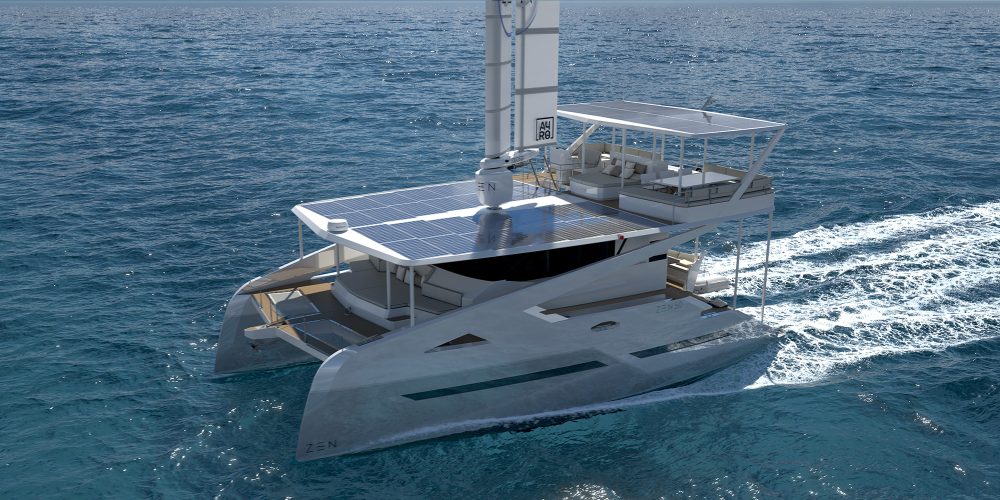
First ZEN Yachts customer should be sailing in early 2023
According to the press release announcing ZEN Yacht’s first sale, the ZEN50 was designed from scratch with a slew of unique technology. For instance, the full-carbon catamaran is lightweight enough that, combined with its 1:1 solar power versus displacement ratio (16 kW / 16 tons), it is completely energy self-sufficient.
Award-winning naval architect Julien Mélot, who designed the ZEN50, elaborated on what the company means when it describes the vessel as a no compromise zero-emission catamaran :
The majority of solar catamarans currently on the market are equipped with a large generator, making them de facto hybrid diesel-solar-electric boats. They offer great speeds in a variety of conditions but are less eco-friendly than true zero-emission vessels. We wanted the ZEN to be a true solar boat, that’s why the first unit in construction is not equipped with any generator and will not carry a single drop of fossil fuel onboard (indeed even the tender is electric and recharged by the mother vessel).
In addition to providing endless energy for at sea voyages, ZEN Yachts explains that the ZEN50 can also be equipped with other zero-emission tech such as a dive compressor, e-foil, electric jet board, or even an electric water maker.
Inside one of the boat’s multiple hulls, the captain and their passengers will be able to relax in two large day beds, three dining areas, multiple ensuite cabins, and a saloon. To stay in touch during long, energy self-reliant trips at sea, the electric yacht maker is also hoping to eventually include satellite internet from SpaceX’s Starlink … emphasis on eventually. Here’s an official statement from ZEN Yachts:
Our first Client wants Starlink installed on his yacht. Based on announcements by SpaceX, this tech will become available for RV and marine applications. Therefore, we will install it on the ZEN50 of our first client (and likely others) when it becomes available. As the first ZEN50 is only due for sea trials in Spring ’23 and Transatlantic crossing later that year or the following, there’s hope on ZEN Yachts’ side that Starlink for marine applications will be available by then.
Traveling on electric propulsion alone might be tough at sea, even with the solar backup. That’s where the OceanWing wingsail comes in. Combined with the e-motor, the ZEN50 can reach a max speed of 14 knots (~16 mph). For continuous cruising, the wingsail and solar panels combine to deliver 6-10 knots of speed (7-11.5 mph). All three technologies combine in the ZEN50 yacht to deliver over 180 nautical miles of range over a 24-hour span.
As you may have noticed from the images above, our only glimpse of the ZEN50 so far is company renderings. Zen Yachts said it expects to complete and deliver the first solar electric sailing yacht early next year. As soon as the first hull leaves the mold, the company is building a second one.
Additionally, Zen Yachts is opening a showroom in Barcelona’s Marina Vela, set to open in April of 2022. Perhaps we can get out there for a visit, although it might be easier to wait for the ZEN50 to arrive to that customer in the US… whoever that might be.
Lastly, the company said it is still calculating the overall carbon footprint of producing the ZEN50 and will make that information public when it’s totaled. Regardless, Zen Yachts has already committed to reaching a net-zero carbon footprint by 2030.
FTC: We use income earning auto affiliate links. More.

Scooter Doll is a writer, designer and tech enthusiast born in Chicago and based on the West Coast. When he’s not offering the latest tech how tos or insights, he’s probably watching Chicago sports. Please send any tips or suggestions, or dog photos to him at [email protected]
solar-powered ZEN50 catamaran integrates automated wingsail for zero-emission voyages
Solar-electric zen50 yacht.
ZEN50 is an emission-free sailing yacht that combines a huge fully-automated wingsail and a solar roof , making it completely energy autonomous. Designed from scratch by acclaimed naval architect Julien Mélot, this full carbon catamaran is equipped with luxurious features, such as an electric tender, dive compressor, satellite internet, and a solar roof that doubles as a spacious upper deck to enjoy stunning sunrises and sunsets. ZEN Yacht company claims it is the world’s first series production catamaran fitted with an electric wingsail. The yacht’s high-capacity battery powers a silent electric propulsion engine, allowing it to reach 14 knots and maintain high speeds without compromising safety and comfort.
zero-emission meets high comfort and performance
ZEN Yachts ‘ electric catamaran is a technological breakthrough that takes the yachting industry one step further, showing the potential of sustainability in this field. ZEN50 is offered with or without wingsail and comes in three different versions: Racer, Cruiser and Explorer, each fitting to the use and owner’s profile. Developed by Ayro, the revolutionary, fully automated wingsail can be added as a range and speed extender. The two parts of the wingsail can be hoisted and lowered independently only with the touch of a button.
With a weight of 16 tons and 17,000 W of maximum solar power, the ratio of the ZEN50 is at over 1 kW per displaced ton of water or beyond 1:1, which defeats any other blue water CE Cat A yacht in this size range. The sharp and slender hulls of the ZEN50 have been designed for utmost efficiency, with minimal energy consumption at a speed range of 6 to 10 knots. Their reverse bows cut through the water, and their curvature is reminiscent of graceful dolphin bodies. These hulls are built with the best available composites: Carbon fibre and Corecell™, for ultimate performance.
ZEN50 can sail at 4 knots running solely on solar power
no emissions, low cost
Zen50 provides a series of luxury amenities. The scheme accommodates three dining areas for over ten people, one professional galley, a saloon, and two wet kitchens, while it can host up to 12 guests in ensuite cabins.
The first ZEN50 model, whose construction started in March 2022, will not consist of an engine system and will not have any fossil fuels onboard. With a 160 kWh battery bank, the ZEN50 energy system has been designed to function for days in complete safety with minimal solar energy harvest and no wind, operating without polluting emissions. This means that users can cruise in remote areas without having in mind refueling concerns. Of course, zero-emission entails a low cost of operation. ZEN Yachts aims to achieve a zero carbon footprint by 2030.
‘Our main voltage system either 48 or 88V depending on the propulsion making it perfectly safe to work on. The level of redundancy of the batteries and solar panels is 10!, the main electrical architecture is split in 2 so that should anything happen on 1 hull, the entire vessel can still operate normally. There are 2 independent helm stations and the ZEN50 is packed with special safety features, insubmersible compartments and we can even offer an in-depth practical course on safety equipment usage and management,’ shares the company.
project info:
name: ZEN50
company: ZEN Yachts | ©zenyachts
SOLAR POWER (368)
Yacht design (226), product library.
a diverse digital database that acts as a valuable guide in gaining insight and information about a product directly from the manufacturer, and serves as a rich reference point in developing a project or scheme.
- space travel design (95)
- sculpture (348)
- turntable design (27)
- design interviews (39)
- shoe design (316)
- motorcycle and scooter design (445)
designboom will always be there for you

THE ESSENCE OF ZEN YACHTS
Zero Emission Nautic Ltd came to existence with the alignment of visionaries sharing the same aspiration - to make seafaring mankind go hand in hand with the respect for the oceans, seas and waterways. After years of research and the communion of complementary lifetimes' experience, the company was established in 2021.
Through the union of ever-progressing clean energy technologies, sustainable high resistance materials and innovative nautical design, we envision a world where humans can sail on zero-emission boats, yachts, and ships, leaving no polluting trace of their passage in their wake. The yachts designed and produced by ZEN are the first step towards a world where human mobility on water is as peaceful as it used to be since the very first boats were built millennia ago, with the added comfort, safety, and minimal environmental footprint that our vessels offer.
Our Mission
We strive to accelerate the transition to zero-emission marine transportation and mobility at large. Our mission starts by creating radically respectful yachts - yachts which will lead the industry by being designed and built from the ground up to leave a minimal footprint on our planet.
Our Sustainable Ways
It is easy to make bold statements on leading the sector to zero emission marine transportation. Statements however, don’t equate to reality - which is more complex and unruly. For example, we know that renewable energy, for all its inherent benefits and beauty, also carries the risk of adverse effects on planet and people because of mining practices around rare earth elements. We also appreciate that many materials we use to build boats with are derived from limited sources on the planet we live on. And we are well aware that transporting products and materials around the world to subsequently produce yachts, comes with a lot of emissions. These examples just to name a few.
We understand that there are no shortcuts, there are no silver bullets, there are no easy answers to tackle the largest problem of our time – the climate crisis. But what we do know is this: with an increasing number of smart, driven and committed people, working on a common goal, with an ever-increasing set of promising technologies we stand a chance.
We take this awareness with us in everything we do when designing, engineering, building, marketing, selling and financing our yachts. Find out more on how we concretely create radically respectful yachts and contribute to zero-emission marine transportation and mobility.
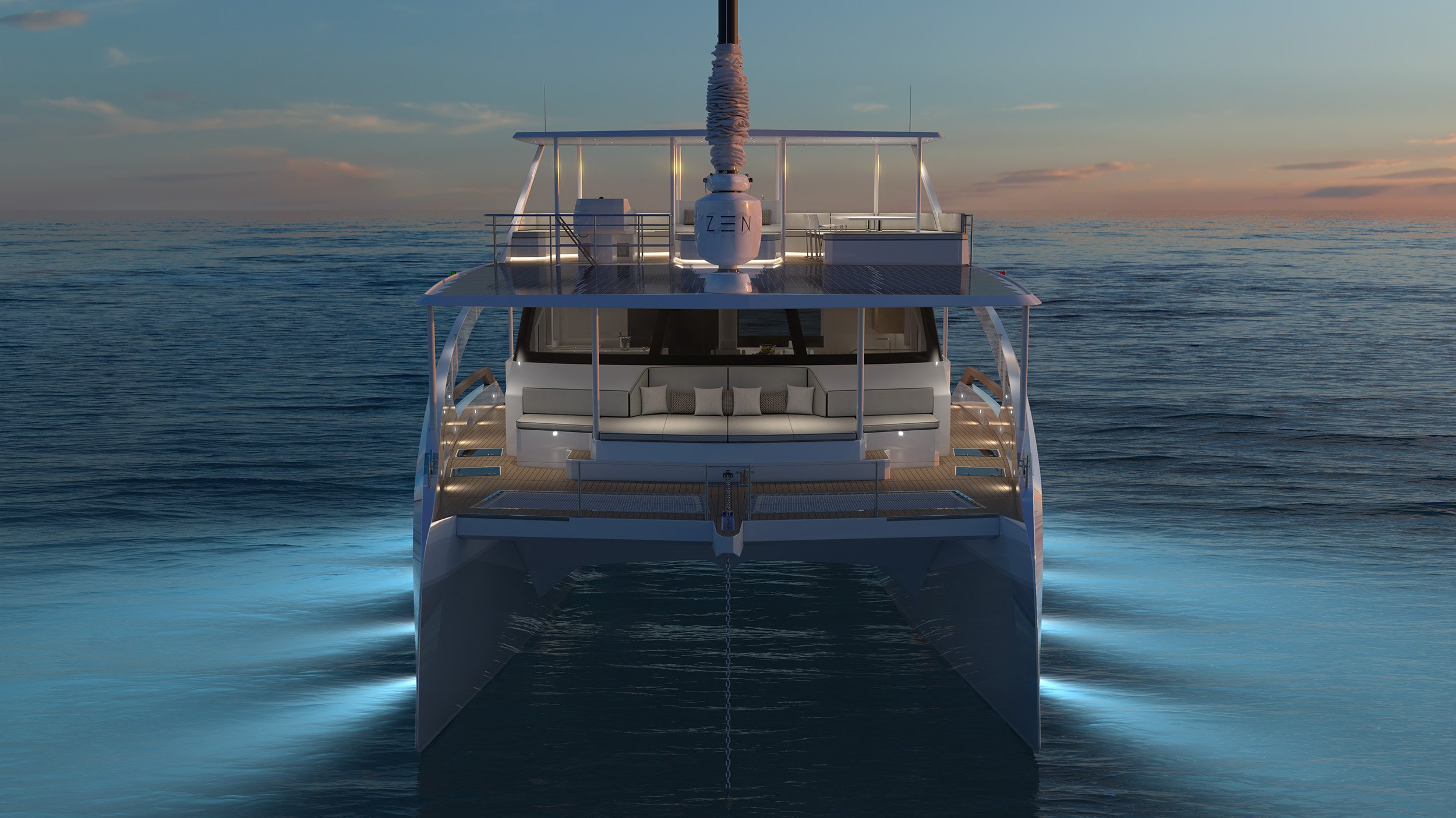
D elight our customers with innovative, energy self-sufficient yachts and a seamless yacht ownership experience
A ct faithfully with honesty, integrity, and passion in everything we do
R espect the environment, each other and our communities worldwide
E mpower our employees and value their diverse talents, initiative and leadership
S erve all stakeholders with an attractive and sustainable return - financially, environmentally and socially
- CARBON PRICES
- CARBON MARKET
- CARBON RECAP VIDEOS
- INVESTMENTS
- CRYPTO BASED
- NATURE BASED
- TECHNOLOGY BASED
- ENERGY/TRANSPORTATION
- NUCLEAR ENERGY
- INVESTOR EDUCATION CENTER
- FREE CARBON REPORT
- CARBON GLOSSARY
- ADVERTISE WITH US
Sailing Green With Sunreef’s Zero-Emission Hydrogen Superyacht
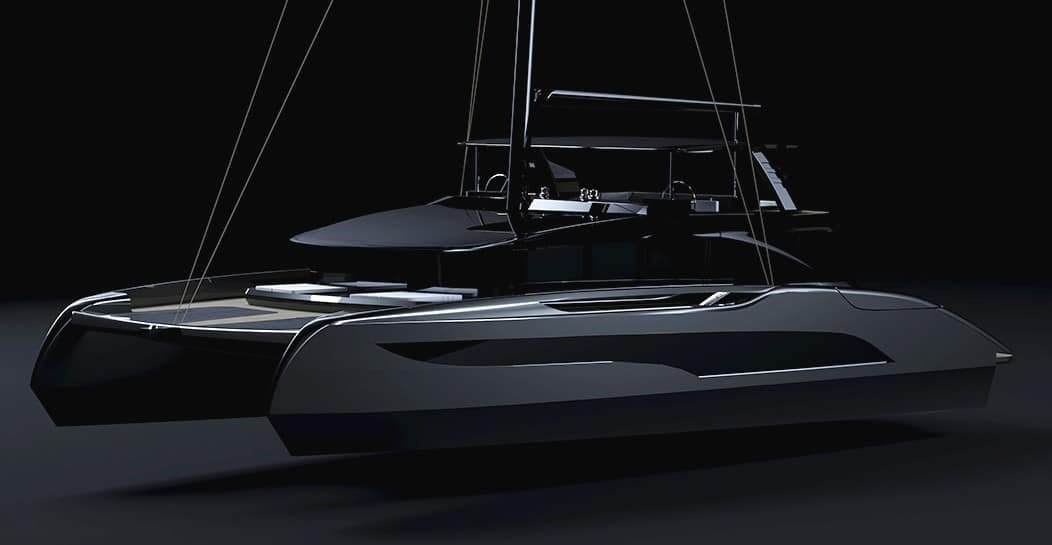
Sunreef Yachts gave seafarers a better look at its revolutionary Zero Cat concept, a catamaran that sails on hydrogen and produces its own power.
Sunreef Yachts is leading the market for semi-custom luxury catamarans while establishing itself as a key player in eco-friendly and sustainable yachting. The Polish yard first teased sailors with its hydrogen and solar powered catamaran last July.
Carbon-Free Luxury Sailing
Yachts have long been the symbols of the luxurious lifestyle of the rich and wealthy. But as concerns about climate change continue to intensify, questions arise on how yachts impact the environment.
A superyacht like the Zero Cat is usually defined as a privately owned vessel with at least 78 feet in length. And there are over 9,300 of these vessels sailing on the oceans that’s valued at more than $54 billion .
Along with ships, superyachts contribute significantly to carbon dioxide emissions, which are often overlooked as they’re released at sea.
According to industry data, a superyacht emits more than 7,000 tonnes of CO2 a year – considering it has a helicopter pad, pools, and submarines. To put that in perspective, the emission is over 1,500x more than how much a family car emits.
With this data, maritime construction yards are also put under the spotlight by environmentalists to do something about their pollution.
Sunreef acted fast by introducing its revolutionary superyacht concept – the Zero Cat . It just released the first renders of this highly awaited multihull.
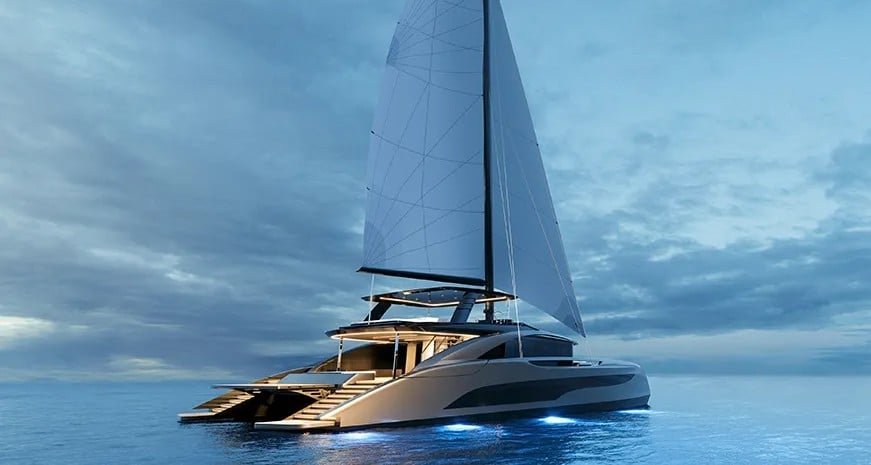
The concept yacht has stairways at the back of each hull, leaning toward the water, and a wraparound lounge at the outside helm. It also appears to have an alfresco lounge.
With this sleek superyacht design, Sunreef’s goal is to develop a sustainable sailing yacht with self-sufficient and unlimited range non-sail propulsion.
At the heart of this zero-emission luxury catamaran is the green energy that sets it apart from other superyacht models.
Zero-Emission and Safe Hydrogen Fuel Cell
According to the yard, Zero Cat runs on an engine that uses a hydrogen fuel cell which powers the superyacht. It also comes with a reformer that can transform methanol into hydrogen.
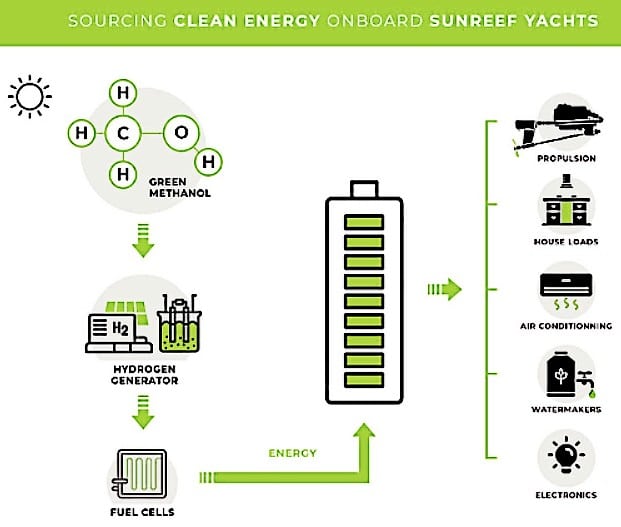
The fuel-cell system producing clean energy will electrically power the propulsion as well as the hotel load, Sunreef said. With this green technology, the catamaran will generate no carbon emissions and oxides.
Without an engine powered by burning oil, the superyacht will also sail with little noise and vibrations for a quiet and smooth ride.
What’s more unique about Zero Cat is its ability to create additional green energy through its hydro generators and solar cells, which Sunreef refers to as a “solar skin”.
The solar skin is not unique to the concept yacht but has been on Sunreef’s other models. It’s wrapped around the superyacht’s bodywork and can continuously produce solar energy so long as the sun shines.
There’s also a bonus in sailing with Zero Cat: no need for high-pressure hydrogen storage on board. It means yachting would be safe, as opposed to the hydrogen stigma created by the 1937 Hindenburg crash.
And that stigma seems to be erased now that hydrogen fuel cells are hitting the market big time.
Not only is the hydrogen-powered system getting attention in maritime but is also gaining traction in road fleets.
A leading company focusing on zero-emission vehicles, First Hydrogen Corp. , shocked the market with its unbeatable fuel-cell EV (FCEV) trial results. The company’s FCEV vans trial with SSE Plc cleared 630km of range, almost double that of traditional EVs. The hydrogen vehicles also boast a 5-minute refuel time, similar to gas-powered vehicles.
With its massive success in the first trial, First Hydrogen will open up fleet trials to additional commercial opportunities. This is in response to growing interests from parcel delivery or logistics companies wanting First Hydrogen’s FCEV for express deliveries. These operation trials will start soon late Qtr 3 and Qtr 4 this year.
The demand for zero-emission vehicles and vessels has started to spike as governments and companies worldwide are racing to net zero emissions . And hydrogen fuel cells offer a promising solution for a cleaner and greener power source.
Sunreef Yachts still has a lot to do before its Zero Cat concept becomes a real superyacht sustainably sailing. But by combining hydrogen energy and other renewable power sources on board the yacht, it holds the promise for a luxurious but carbon-free getaway on the sea.
Disclosure: Owners, members, directors and employees of carboncredits.com have/may have stock or option position in any of the companies mentioned: FHYD
Carboncredits.com receives compensation for this publication and has a business relationship with any company whose stock(s) is/are mentioned in this article
Additional disclosure: This communication serves the sole purpose of adding value to the research process and is for information only. Please do your own due diligence. Every investment in securities mentioned in publications of carboncredits.com involve risks which could lead to a total loss of the invested capital.
Please read our Full RISKS and DISCLOSURE here.
India Challenges EU’s Carbon Border Adjustment Mechanism (CBAM)
First ethanol facility to issue carbon removal credits, sec finalizes new climate disclosure rule: here’s what’s new, carbon offset etf, kset, to stop trading by march 14, abatable vcm report reveals developer ccp approval rates for first time, what is cop28 key issues to watch out at 2023 climate summit, climate disclosure: new corporate standards for a net zero world, carbon pricing: understanding the economics and trends of fighting climate change, the eu corporate sustainability reporting directive (csrd): key things to know.
CarbonCredits.Com is your source for carbon news, carbon pricing, carbon opportunities and more.
Editor Picks
Retiring carbon credits: everything you need to know, free carbon report.
©2024 CarbonCredits.Com. All rights reserved.
- Terms of Use
- Privacy Policy
Yachting World
- Digital Edition

Electric dreams: Jimmy Cornell reports on life aboard his eco-friendly catamaran
- Jimmy Cornell
- December 16, 2020
Jimmy Cornell reports on his new catamaran, aboard which he plans a fossil-free circumnavigation
We couldn’t have picked a more miserable day to go out for our first sail on Aventura Zero . As we left the marina, grey skies hung low over the bay of La Grande Motte and it felt more like being in the North West Passage than the south of France. But once the sails were up, Aventura , a bespoke version of the Outremer 45, came alive and the magic took over.
As I took hold of the wheel, I felt a surge of mixed emotions: excitement, satisfaction, but above all a great relief that my complex and challenging project has become reality. I also felt 30 years younger.
Barely a year ago I realised that my active years were soon going to be over, and I ought to do something special, but also relevant, while still able to do it. This is how the idea was born of a round the world voyage in a fully electric boat along the route of the first circumnavigation 500 years ago.
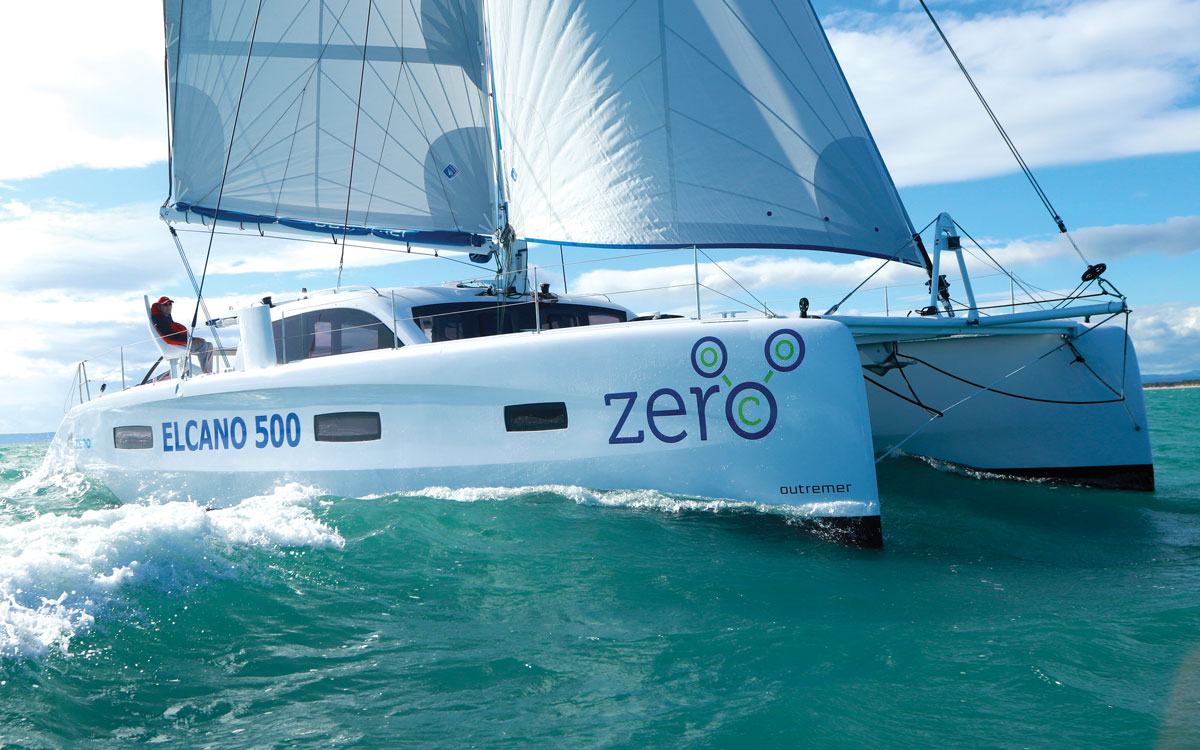
‘My crew were jumping up and down on the trampoline like kids in a playground’
As I explained in a previous report , even for a dyed-in-the-wool monohull sailor like myself opting for a catamaran seemed to be the best solution for the voyage I had in mind. A performance cruising catamaran would be fast under sail and thus able to generate electricity; it would also have sufficient surface available to display several solar panels.
Strangely enough, when I was planning my first voyage in the early 1970s, it was a catamaran that I believed would be best suited for a family with two young children. In those days, the UK was at the forefront of multihull development and there were several boatyards producing cruising catamarans.
The Snowgoose 35 and Iroquois looked very tempting, but when I approached the builders and told them that I could only afford their bare shells and would finish the rest myself, they both refused. So I had no choice but to go for a Van de Stadt Trintella III hull… and the rest is history.
Article continues below…
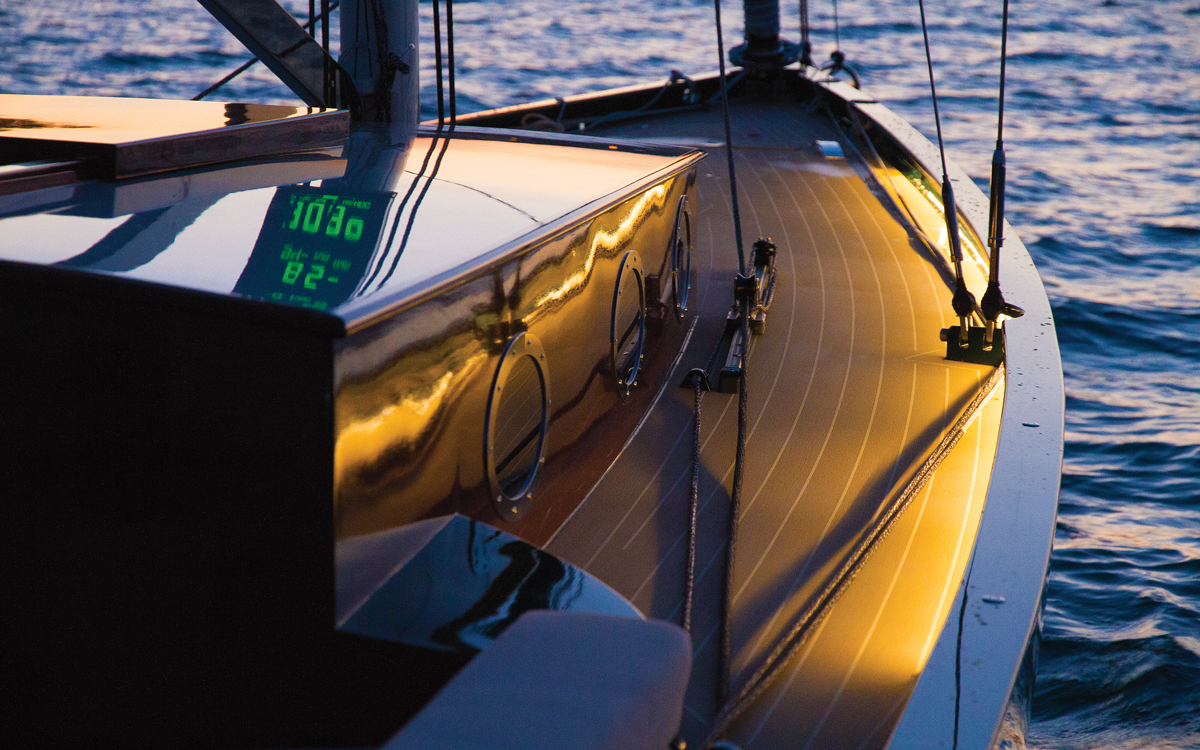
How hybrid sailing yachts finally became a feasible option
Every sailor is familiar with the wet cough of the diesel engine, and the acrid smell of its exhaust. For…

Lithium boat batteries: Why now is the right time to upgrade your electrics
Larger new cruising yachts, especially those at the quality end of the market, have been routinely fitted with lithium boat…
All about power
The main purpose of our sortie on that gloomy day was to test Aventura ’s regeneration system. The essential feature of an electric boat concept is not its propulsion but the ability to produce electricity while sailing. It’s no good having an electricity-driven boat if you cannot produce electricity to replace what has been used; and that is the key element of the Oceanvolt system.
While sailing, the propellers on the two saildrives are turning and producing electricity. This is the concept of electric regeneration.
For reasons of security, Aventura has two different propellers. On the starboard side a variable pitch ServoProp, developed by Oceanvolt, is very efficient in producing electricity. The Gori folding propeller on the port side is less efficient in producing electricity but more efficient for propulsion and also more robust in case of a collision.

Oceanvolt’s Alberto Estivill compares the performance of the two saildrives in relation to speed
This is the potential weakness of the ServoProp and the reason for having chosen this compromise solution. As the ServoProp is highly efficient in generating electricity, it is capable of producing enough to cover 80% of the total output.
Initially, I had been told by Oceanvolt that we could expect an average charge of 600W at 6 knots and 800W at 8 knots, which sounded quite reasonable. But once Aventura got into her stride, we were achieving double those values, and much more at higher speeds.
Indeed, as our speed moved into double figures the ServoProp was charging the batteries at over 2kW, which was beyond my highest expectations… until Aventura caught a wave, started accelerating, the speed climbed to over 14 knots and the figure on the gauge shot up to 6.9kW!
The test also confirmed that the Gori propeller was much more efficient for propulsion, consuming less than half the electricity at the same revolutions than the ServoProp, while the latter produced on average as much as four times more electricity in regeneration mode compared to the Gori.
It will take more than a few hours’ sail to make an accurate assessment of the range under power, but in theory we should expect the two battery banks of 28kWh each to give us an autonomy of 10 to 12 hours at a cruising speed of 4 knots in light sea conditions, and perhaps 3 hours at 8 knots and full power.
A key feature of the Oceanvolt set up is its remote monitoring and management system. The entire Oceanvolt installation on Aventura Zero can be monitored in real-time over the internet. Thanks to this technology, Oceanvolt engineers are able to diagnose and deal with potential faults remotely from their base in Finland.
Via the remote interface it is possible to monitor overall power consumption and charging of the battery banks by hydro-regeneration or solar panels.
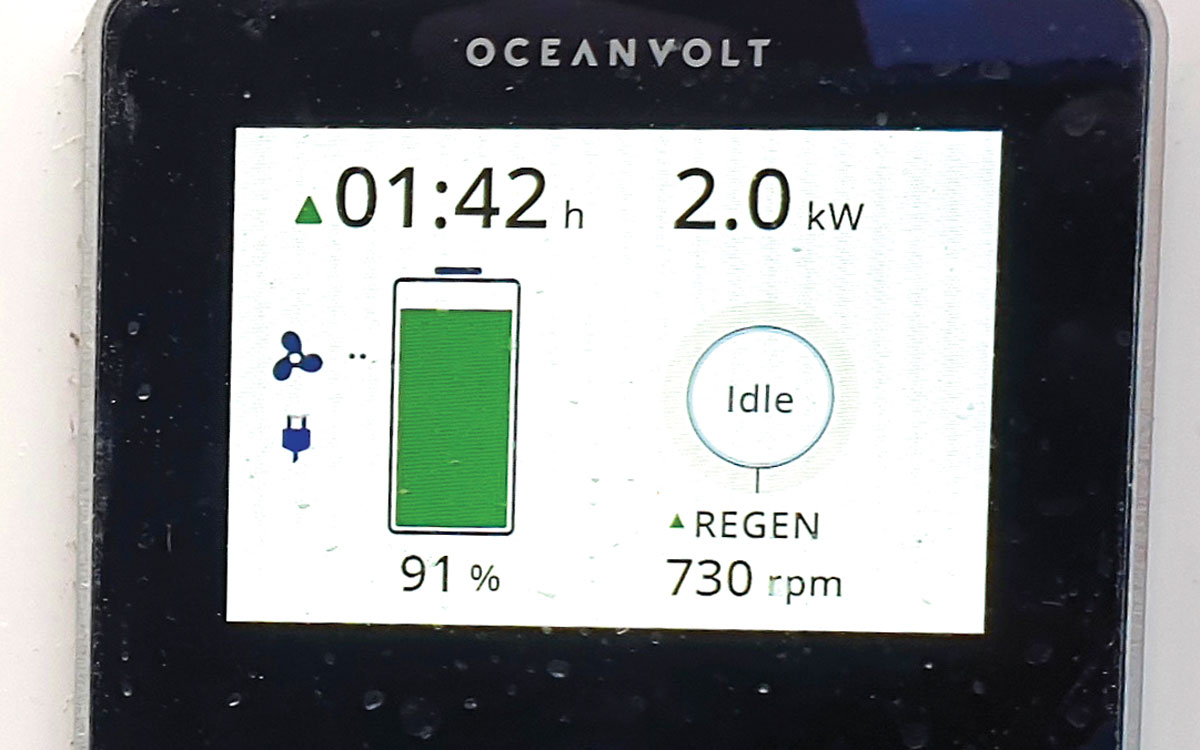
A pleasant surprise for Cornell and the test team as the display confirms the regenerative power coming from the Oceanvolt drive
Taming the performance
Having tested the Oceanvolt system, and with any concerns about its efficiency laid to rest, we spent the rest of the afternoon sailing up and down the bay, tacking and gybing in winds from 15 to 18 knots. With my monohull mentality, and aware of the speed potential of this type of cat, my main concern was how to keep matters under control quickly and efficiently when the need arose to depower the boat.
When I sailed last December from the Chesapeake Bay to Puerto Rico on an Outremer 5X rigged purely for racing , it took the three of us half an hour to put in a reef. That was something that I couldn’t accept and was determined to do better on my new boat. Now, with a simpler deck layout and the undisputed advantage of a rotating mast, we did it in less than half that time. We tacked and gybed, reefed upwind and reefed downwind, and it couldn’t have been easier.
Once done with slowing down the boat, we shook out the reef, turned into the wind and proceeded to test Aventura ’s windward going capability. And this is where I had the greatest surprise, not of the day but of the entire testing sequence.
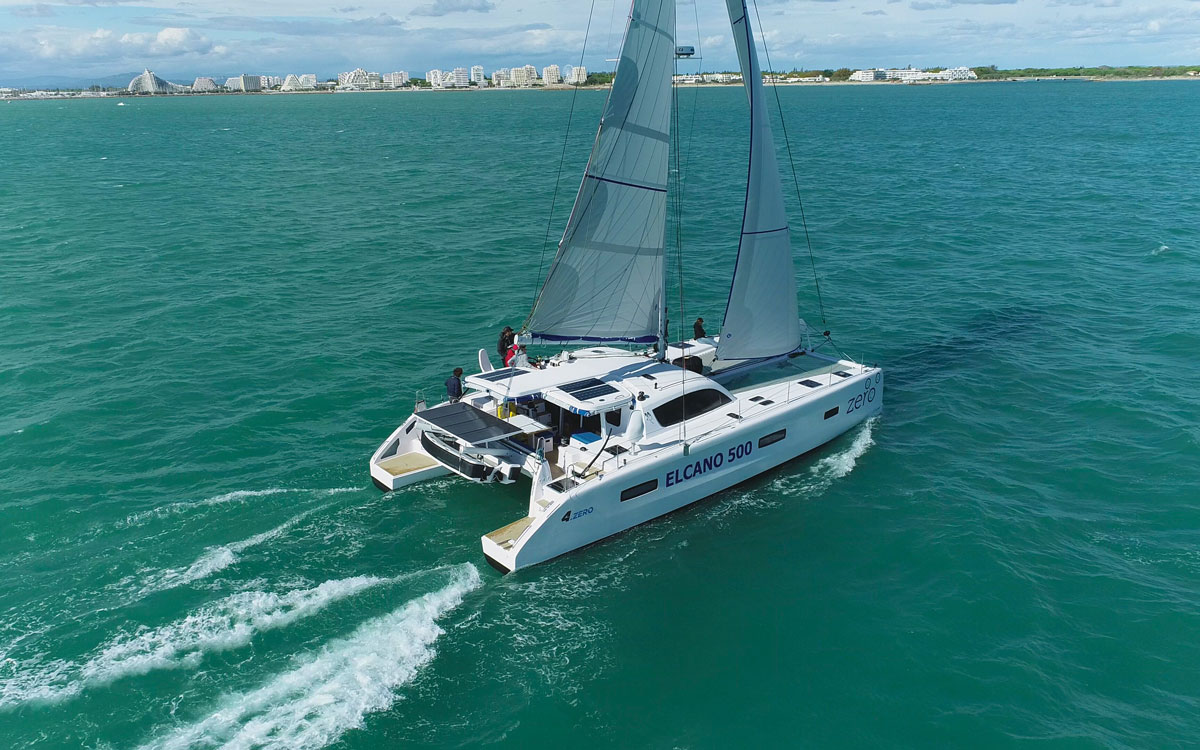
Plenty of deckspace allows for 1,300W of solar panels
With full Solent and mainsail, the mast turned to 28° and the lee daggerboard down, Aventura was romping ahead at 9.5 knots at an apparent wind angle of 36° (true wind angle of 42°), and in 17 knots of true wind. I must be dreaming, I thought, before taking a photo to look at when I woke up.
A balmy day with a veritable Mediterranean sky worthy of a Cezanne painting smiled upon us as we left port the next day to continue testing the sails and deck layout. Lights winds and little swell provided ideal conditions to test the Code 0. Made of Aramid laminated cloth, it set beautifully and, once again, Aventura amazed me with her speed potential.
The turbo sails
Reaching in 10 to 14 knots of wind we were soon achieving the same speeds through the water. A sudden burst to 18.6 knots made me look twice at the speedometer to be sure I wasn’t reading the depth, while my crew were jumping up and down on the trampoline like kids in a playground.

“I am absolutely addicted to this versatile sail,” says Cornell of his fourth Parasailor. He believes more multihulls should carry them
The last in my sail wardrobe is a Parasailor, a spinnaker of a special design I have been using ever since its inventor Hartmut Schädlich sent one to me in New Zealand in 2004 to test on my return voyage to Europe. The latest is my fourth, as I am absolutely addicted to this versatile sail, which I can easily raise and douse on my own, as I did on this occasion.
For reasons that I cannot understand, Parasailor is little used or even known among many catamaran owners, so here was an opportunity to put this right. A fluky wind puffing between 5 and 10 knots offered me the ideal conditions to attempt to persuade my doubtful audience – Outremer sales manager Matthieu Rougevin-Baville and delivery skipper Julien Calvet.
The 210m2 monster played its role to perfection: it stayed full and steady in those light winds, and exceeded even my expectations when it kept Aventura moving at 6 knots in little over 7 knots of true wind. QED, but I am still waiting for my Gallic friends’ verdict.

Cornell with his crewmates: Americans Conor Dugan and Taylor Esposito, and Greek sailor Michalis Zacharias
Meanwhile, my crew’s verdict was as enthusiastic as they had been about everything else to do with this boat. Conor Dugan and Taylor Esposito are both Americans and have spent many years in the charter business in the Virgin Islands.
Having managed production catamarans of well-known brands, perfectly suited for charter guests but not very exciting to sail, witnessing the performance capability of Aventura was, in their words, “like having woken up in heaven”. My third crewmember is Michalis Zacharias, an experienced Greek sailor, who is just as excited at the prospect of a long voyage on such a boat.
Cooking on solar
Besides its outstanding performance, Aventura Zero also promises to be a comfortable home. Being fully electric will certainly add to that, although it will force us to adapt to a different lifestyle.
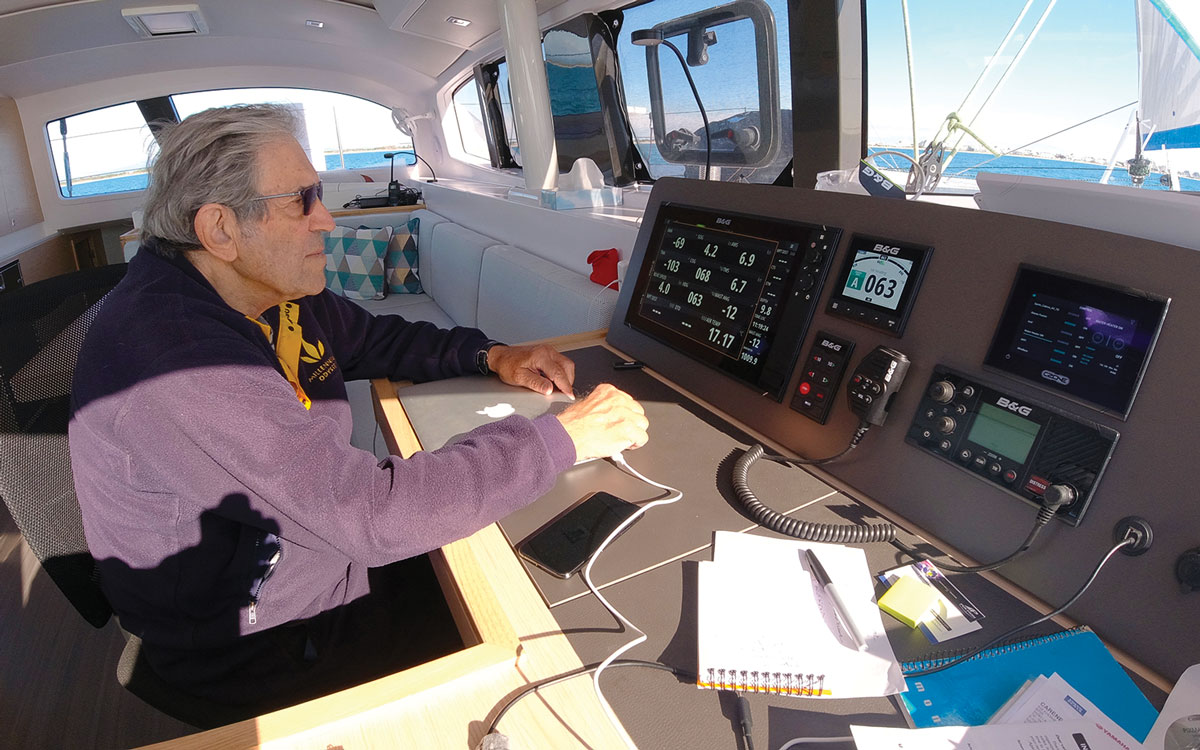
Cornell monitors B&G’s comprehensive Zeus3 navigation system
That certainly applies to the way we shall do our cooking, and keep an eye on the electricity consumption of such hungry items as water heater, hot plate, oven and breadmaker, all of which run off 220V.
The main energy storage is provided by the two propulsion battery banks of 28kWh each. The service battery, which supplies 12V to the electric winches, windlass and toilets, lights and various pumps, is recharged continuously from those banks.
As both battery banks are recharged continuously by the solar panels, with a total capacity of 1,300W, it makes sense for us to cook in the middle of the day, when their output would roughly equal that of consumption.
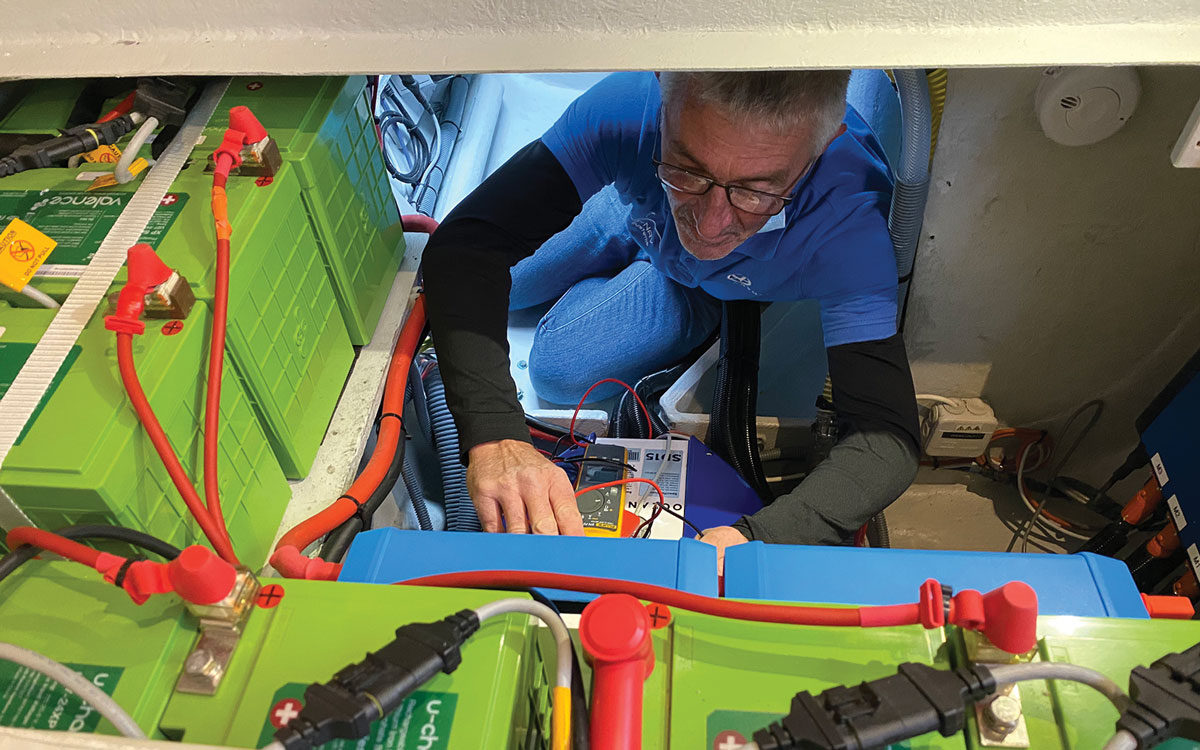
Testing Oceanvolt’s output to the two banks of 28kWh batteries
As we shall sail several long offshore passages, conserving fresh provisions is a high priority. The two fridge-freezers on Aventura Zero have a drawer-type mechanism which are much more efficient than the front-opening domestic type fridges used on many yachts today.
On the navigation side, the B&G Zeus3 is at the heart of a comprehensive system, which also includes a working autopilot and a backup. The latter has its own Triton display, GPS and wireless wind sensor, and is part of an emergency circuit entirely protected from the rest of the boat. It also has its own battery and Sail-Gen hydro-generator.
Satellite communications will be provided by Iridium Certus, the fastest L-band maritime service available. Throughout the voyage we shall automatically send data on wind speed and direction, barometric pressure, water and air temperature, to the World Meteorological Organisation, just as I did from the North West Passage.

Jimmy Cornell is marking the 500th anniversary of the first round the world voyage by sailing the same route as Basque sailor Juan Sebastian Elcano. His aim is to do so in an electric boat with a zero carbon footprint and he plans to set sail this November
A late addition to my range of electronics is OSCAR, an anti-collision device that detects floating objects up to 500m ahead, whether small boats, whales, containers or any other flotsam that could present a danger. It greatly improves safety both by day and night, and is the first navigational aid system based on artificial vision and intelligence. Currently it is used on some of the Vendée Globe yachts and our voyage will be a good test for its attraction on cruising boats.
Our tender is a lightweight OCT 330, built in New Zealand by Offshore Cruising Tenders. It is equipped with a Torqeedo 1103C electric outboard with a long-range, high-capacity 915W battery.

The davits carry a lightweight 3.3m OCT dinghy with electric outboard
With autumn advancing fast and sailing conditions to the Canaries rapidly deteriorating, as soon as our tests and preparations are completed we shall sail for Seville and the symbolic start of our journey.
Because of the uncertain COVID situation in Brazil and also Argentina, we shall avoid calling anywhere in continental South America. After a brief stop in Tenerife we shall sail non-stop to Punta Arenas, in the Magellan Strait, a 6,000-mile leg that should prove that both boat and crew are worthy of following in the wake of our daring predecessors.
First published in the December 2020 issue of Yachting World. Since this report was published, Jimmy sailed to the Canaries, but during this passage came to the cruel realisation that the regeneration system was not going to give him the power required and had to make the difficult decision to return to the yard in France to evaluate further. For more information, check out his Cornell Sailing blog .

Hydrogen Fuel News
Hydrogen News – Green Hydrogen Report
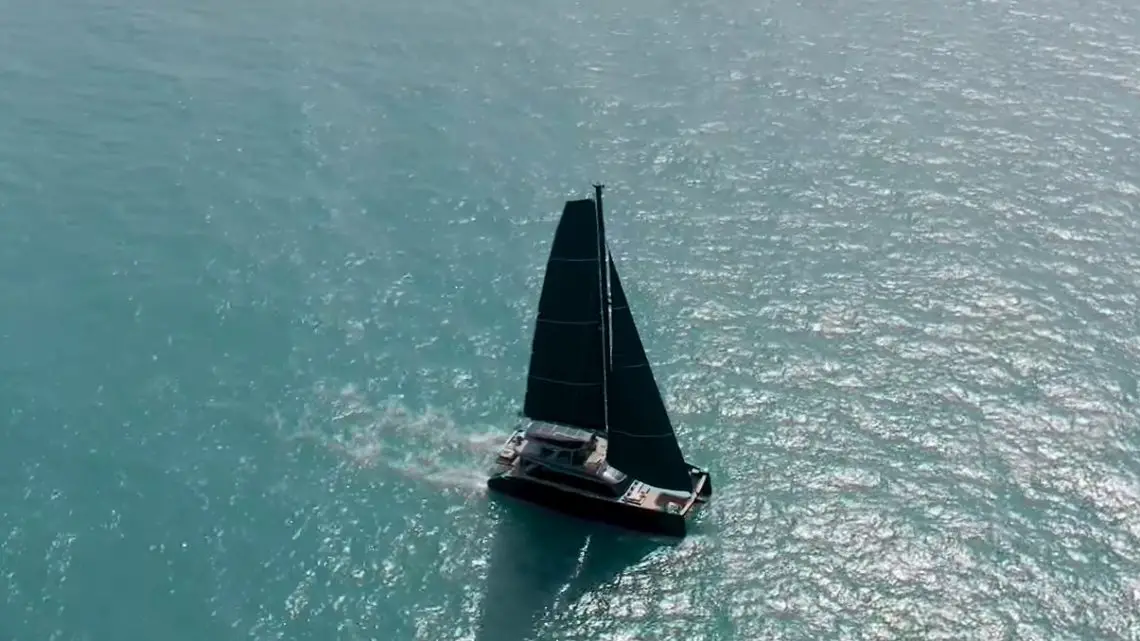
Extraordinary Hydrogen Fuel Making Catamaran Solar-Infused Armor
The 90-foot craft from sunreef not only runs on h2 but actually produces it on board..
Sunreef has announced that it intends to launch a catamaran that will not only run on hydrogen fuel, but it will also produce it for itself.
The watercraft is able to operate without producing any greenhouse gas emissions.
The hydrogen fuel using and producing catamaran is called the Zero Cat. It is presently in its development stage and will have a number of different forms of innovative green technologies aboard. Mainly, this involves the production of its own fuel while it is sailing, providing “unlimited autonomy” according to the company.
The catamaran measures just over 90 feet and will use a special type of generator to produce the H2 from methanol. Sunreef’s announcement of its multihull watercraft didn’t provide many details about the system, but did say that it would produce clean, emission-free energy that will be used both for the electric propulsion of the vessel and for its hotel load.
Solar cells will also be built into the vessel’s entire bodywork to power the hydrogen fuel production.
The solar cells will generate electricity during the daytime, providing the catamaran with power for its operation and for the H2 production process. The Polish yard has already shown off this patented “solar skin” on several watercraft, including an 80-foot catamaran, a 100-foot sailboat and an 80-foot sailboat.
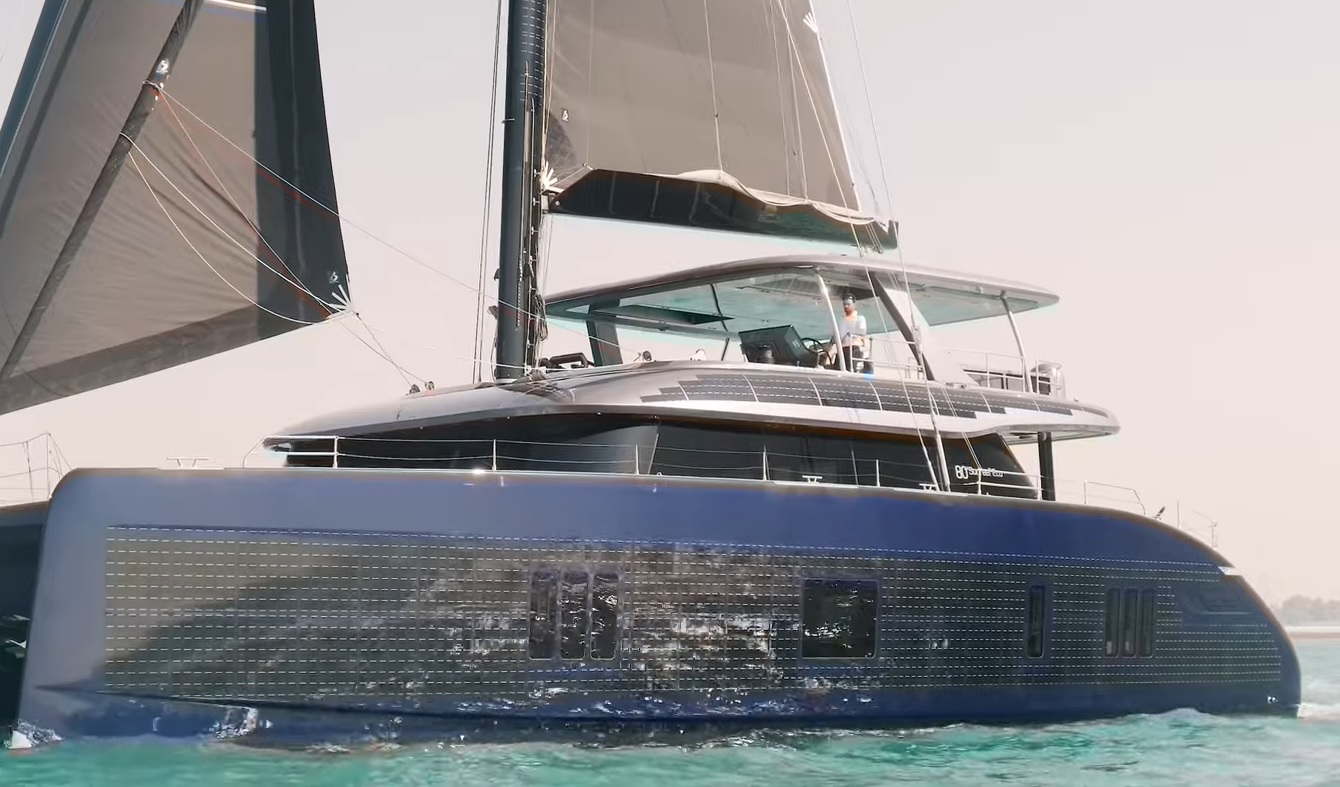
The 80-foot catamaran that has used the solar skin is equipped with 160 kW main motors, achieving speeds as high as 10 knots.
Sunreef has made its way into the headlines a number of times over the last couple of decades, having become a top choice for luxury catamaran building. The company has delivered vessels to Rafael Nadal, the tennis celebrity, as well as Fernando Alonso, the two-time Formula 1 champ. That said, the company’s R&D team has said that it continues to push forward to accomplish new achievements in sustainable sailing.
A zero-emission sailing experience that is “exceptional”.

The Hidden Environmental Cost of Luxury Super Yachts
Super yachts, the epitome of luxury and opulence, have long been a symbol of the affluent lifestyle. However, with climate change concerns escalating, the environmental impact of these floating palaces is coming under scrutiny. There are over 9,300 super yachts, defined as privately owned vessels at least 78 feet in length, sailing the seas globally. These vessels represent a staggering value of over $54 billion. Yet, their environmental cost is equally alarming. Super yachts, along with other large ships, contribute significantly to carbon dioxide emissions. These emissions often fly under the radar as they are released at sea and not on land.
According to industry data , a typical superyacht can emit over 7,000 tonnes of CO2 annually, especially if it is equipped with extravagant features such as a helicopter pad, pools, and submarines. This emission level is a staggering 1,500 times that of a family car. Considering these startling figures, maritime construction yards are now facing pressure from environmentalists to reduce their pollution footprint and innovate towards cleaner, more sustainable yacht designs.
In conclusion , the environmental cost of luxury super yachts cannot be ignored. With their significant contribution to carbon dioxide emissions, these symbols of wealth and opulence are under increasing scrutiny. The move by Sunreef to design a zero-emission catamaran that runs on hydrogen fuel and produces it onboard is a revolutionary step towards sustainable sailing. This innovation not only promises to reduce the carbon footprint of yachting but provides an exceptional sailing experience for the environmentally-conscious seafarer.
While we revel in the beauty and grandeur of these floating palaces, it’s imperative that we also commit to preserving our oceans and the natural beauty of the sea. The journey towards greener, more sustainable yacht designs has begun, and it is a journey that the industry needs to embark on collectively, with urgency and commitment.
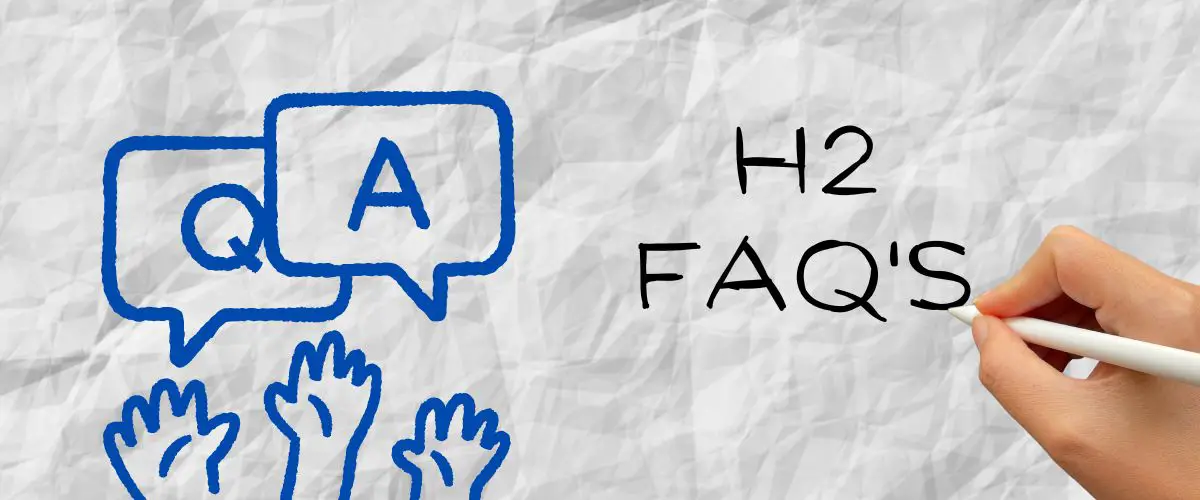
FAQs on Sunreef’s Hydrogen Fuel Catamaran
1. What is special about Sunreef’s new catamaran? Sunreef’s new catamaran, named the Zero Cat, is a 90-foot watercraft that not only runs on hydrogen fuel but also produces it onboard. This makes it a zero-emission vessel.
2. How does the catamaran produce hydrogen fuel? The Zero Cat uses a special type of generator to produce hydrogen from methanol. Solar cells built into the vessel’s bodywork also power the hydrogen fuel production process.
3. What is the purpose of the solar cells on the catamaran? The solar cells on the Zero Cat generate electricity during the daytime, providing power for the operation of the catamaran and the hydrogen production process.
New Green Jobs Posted Daily
4. Does the catamaran have any other energy sources besides hydrogen fuel? Yes, the Zero Cat also utilizes solar energy which is collected through a patented “solar skin” built into the vessel’s entire bodywork.
5. What are the benefits of this hydrogen fuel catamaran? The primary benefit is that the Zero Cat operates without producing any greenhouse gas emissions, making it an environmentally friendly option for sailing.
6. Who is behind the creation of the Zero Cat? The Zero Cat is being developed by Sunreef, a company known for building luxury catamarans and has delivered vessels to notable individuals such as Rafael Nadal and Fernando Alonso.
7. What is the goal of Sunreef with this project? According to Nicolas Lapp, Sunreef co-founder and chief technology officer, their goal is to revolutionize the industry by offering customers an exceptional zero-emission sailing experience. This project represents a milestone in their ongoing commitment to protecting oceans and preserving the natural beauty of the sea.
8. When will the Zero Cat be available? The Zero Cat is currently in its development stage. More details about its availability will be provided by Sunreef once the project progresses further.
Ready to test your knowledge on the most abundant element in the universe? Take our fun and engaging Hydrogen Quiz now!
Test Your Hydrogen Knowledge
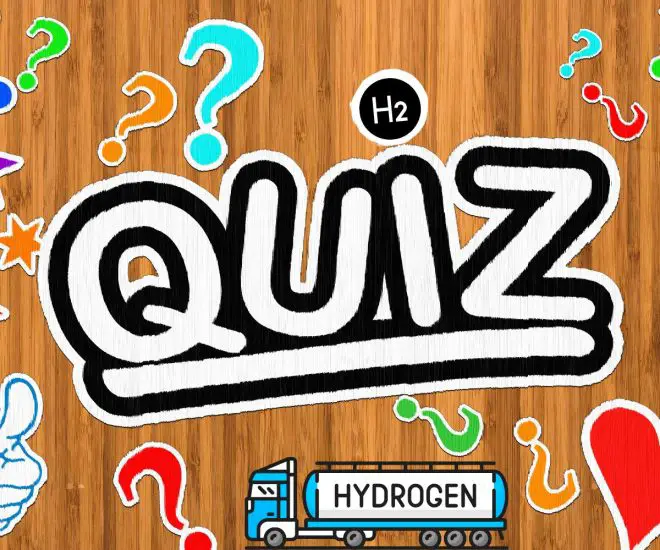
Dive into our "Test Your Hydrogen Knowledge" quiz, designed to challenge your understanding of this fascinating element and its uses in science and energy technology.
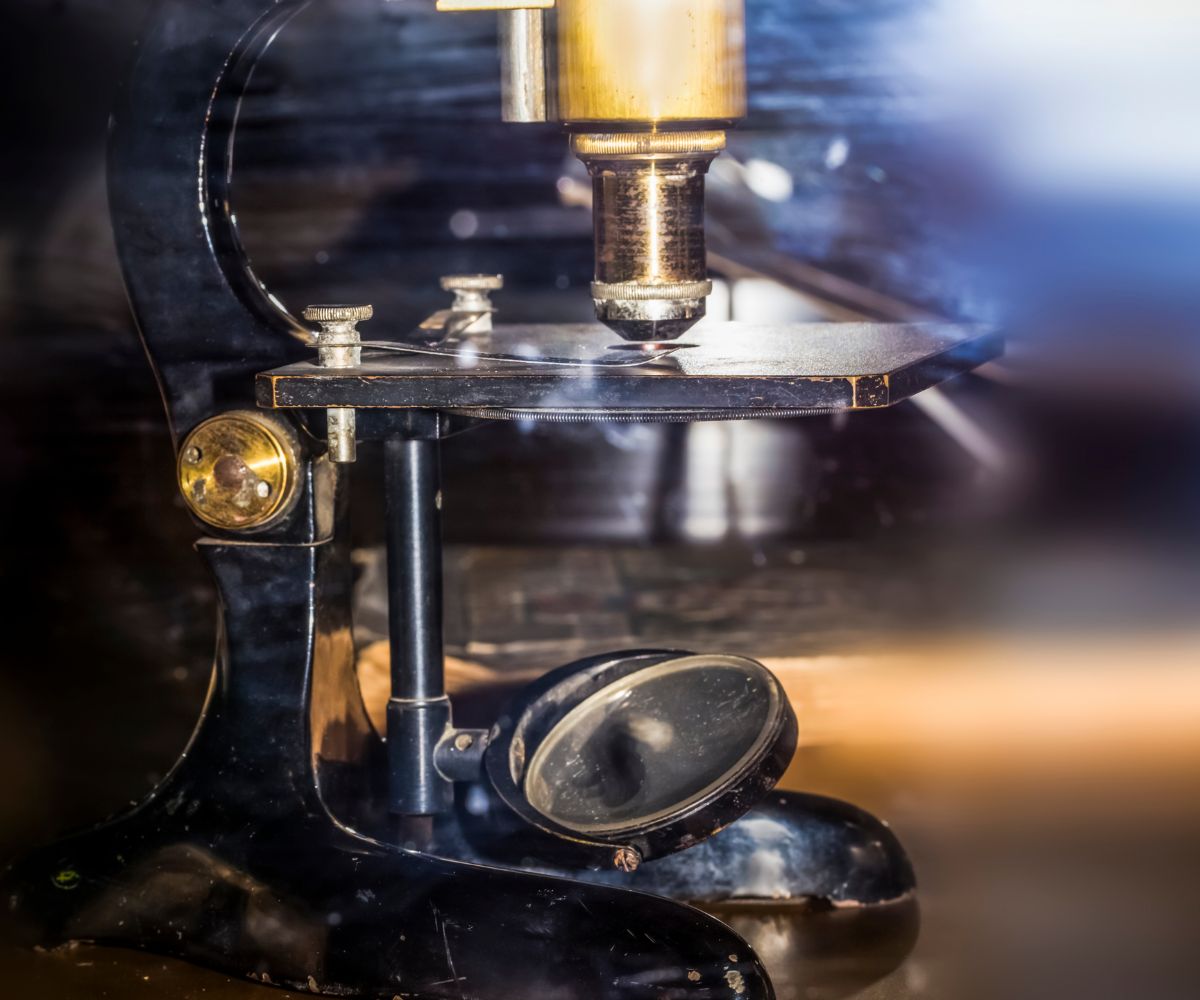
About The Author
John Max is an experienced sound engineer with a bachelor’s degree from UCLA. With over 25 years of experience in the entertainment industry, John has also worked as a machinist, producing parts for cameras. Apart from his professional achievements, John is passionate about classic cars, owning a dazzling 1976 Porsche 911. While he drives a Toyota Prius on a regular day, John is excited about getting his hands on his first hydrogen car soon. John has been an avid writer for Hydrogen Fuel News for 17 years, contributing to the team as they collectively investigate and learn about the growth and technology of hydrogen fuel. At Hydrogen Fuel News, John is part of a great team that shares a common goal of exploring and investigating the world of hydrogen fuel.

Fuel News Center
- Privacy Policy
- Submit Press Release
- Terms of Service
- Welcome to Hydrogen Fuel News
Search Site
Energy news 24/7.
Grab Our Free ebook

Top Eight Misconceptions About Code Zero Sails
What exactly is a code zero? Code zeros are only used on racing boats, right? Aren't they pretty expensive and difficult to get up and down? If you've pondered any of these questions, you are not alone. There are many misconceptions about these downwind reaching sails, so it's time to get familiar and comfortable with them – code zeros might just be the perfect addition to your downwind sail inventory. Read on as we clear up some of the most common myths and misunderstandings about code zeros.
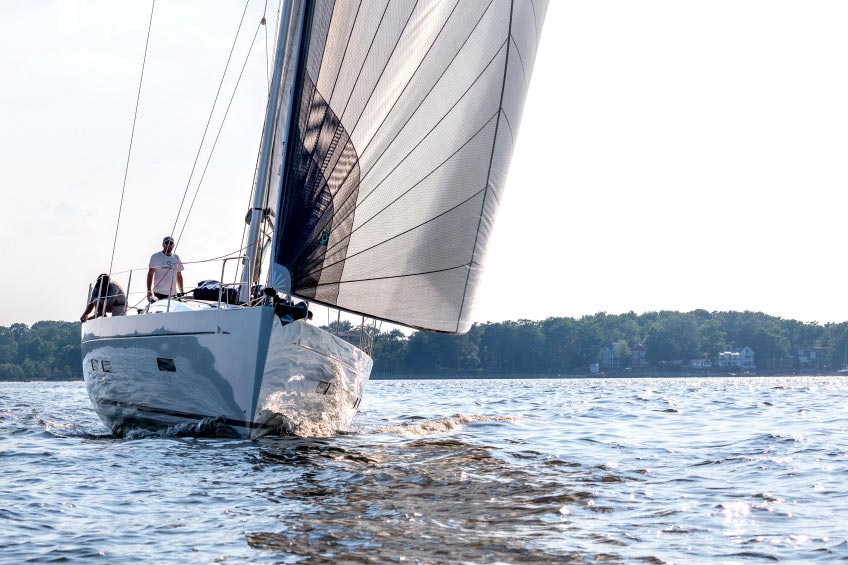
The code zero has only been around for about 25 years. It was born in the Volvo Ocean Race, back when it was still called the Whitbread-Around-the-World Race. They are often referred to as a gennaker or a code sail. Code zeros have characteristics of an upwind sail but are classified as a downwind sail. Some are built of nylon, while others use heavier, stronger composite materials. There are a lot of things we think we know about a code zero, many of which aren’t true, or, at least, not always true.
We sat down with Quantum’s VP of Product Integration and sail designer Doug Stewart to educate us on the code zero.
1. Code zero is another name for a gennaker. Not necessarily. The term gennaker can cover a code zero, screecher, or reaching spinnaker. Gennaker is just a general term for a potential downwind sail, a cross between a Genoa and an asymmetrical spinnaker. It’s a marketing term.
2. A screecher and a code zero are the same thing. Nope. A screecher is specifically a multihull term for a very large, very flat sail for going upwind or just cracked off. Catamarans and trimarans have notoriously small jibs, making them grossly underpowered in light breeze. A screecher is larger, higher clewed, and fuller than a genoa but flatter than a typical code zero.
3. A code zero is strictly a racing sail. Cruisers of all ilks have taken to the sail for its range and ease of use. True downwind spinnakers can be unruly and intimidating for a shorthanded or novice crew, but the range and furling ability of the code zero make it a fantastic sail for a weekend outing. We find that once introduced to the code zero, cruisers will use this sail more than any other on the boat. Quantum has even created a whole new line of reaching and running downwind sails geared towards cruisers to help make the decision clear and simple when considering adding a specialty sail to your inventory.
4. All code zeros are created equal. A code zero is a code zero is a code zero, right? Not so. While the code zero for racing monohulls is often restricted by rule to a mid-girth of at least 75 percent of the foot length and a leech that is no more than 95 percent of luff length, code zeros for cruising boats and multihulls can be significantly larger and have a lot more variety in their design, from very deep to very flat. There are no rules or restrictions for cruisers! Quantum’s racing code zeros and some cruising code zeros are made with specially developed composites for higher load applications (bigger boats and more close-winded capable sails), while sails for smaller boats and broader angles can be made with heavy nylon.
The most important question to ask yourself as a boat owner is “What do I want to do with this sail?” Are you a racer or a cruiser? Do you want to use it to sail in very light air to sail relatively close to the wind, or will you use it on a broader reach? The answers to those questions will help your sailmaker determine the design of the sail that’s right for you. We’ve renamed our reaching code sails based on the potential apparent wind angle and optimum wind range of each sail, making it even easier to pinpoint the best one for you. Take a look at the AWA 40, AWA 60, and AWA 80 downwind reaching sails.
5. A code zero is strictly a downwind sail. A code zero is often classified as a spinnaker in terms of racing, hence the restriction on the length of the mid-girth, but it’s not a true downwind sail. If you’re going downwind, you’ll use either a symmetrical or asymmetrical spinnaker. While it does depend on the wind speed, especially for boats without a 155-percent genoa, there’s a lot of range between the jib and the first true spinnaker. As soon as you crack off even 5 degrees from the range of the jib, you could be into code zero territory. The whole range of sizing between a Genoa and a 75-percent girth code zero is just opening up as racing rules are now beginning to address and rate this range in the middle.
In light air up to eight knots, a code zero designed with a longer leech and lower clew can be sheeted inboard and used at a higher angle. A higher clew with the sail sheeted to the back of the boat is a reaching code zero and can be used in slightly higher breeze. In an ideal world, we’d sell every boat two code zeros−one for upwind and one for reaching, but we know most boats can only carry one. Whether you’re a racer or a cruiser, it comes back to that question from the sailmaker: What do you want to do with this sail?
6. A code zero is a beast to get down. Okay, so the early code zeros did require an experienced crew to get them back onto the deck safely and cleanly. But today, the majority of code zeros are designed on a furler, making it possible for even a novice crew to go from the jib to the code zero in a matter of seconds. If you are concerned about the slight weight increase of a no-torsion cable, there are even cableless code zero options now!
7. A code zero is really expensive. Early top-down furling systems required a custom-made torsional rope. Really good systems with a quality torsional rope were sometimes as expensive as the sail. However, with more and more manufacturers offering top-down furling systems and torsional rope now available pre-made on a drum (at least for mid-sized boats), the overall cost of the sail and the system has come down significantly.
8. A code zero can do anything. I just said that the code zero is appropriate over a huge range, especially in light wind conditions, and being situated on a top-down furler makes it hugely convenient, even for novice sailors. However, a code zero cannot in fact “do anything.” We see code zeros fail most often when they’re pushed too high in high breeze; this is a particular problem on multihulls because the boats are so stable. A code zero also can’t live indefinitely tacked to the bow of your boat. While cruising code zeros have a thin strip of UV protective material, if left indefinitely in the sun they are sure to shrivel up into a brittle, moldy end.
To maximize a code zero when racing, it’s important to know your crossovers. Be diligent about going out and recording wind speed and wind angle as you switch between your jib, code zero, and spinnaker, and then stick to those numbers.
So there you have it. A code zero will take you through more wind angles than any other headsail on your boat. Add a modern top-down furler and it’s easier to get up and down than a spinnaker. Racing in light, shifty conditions, it might just be the sail that helps you eke out precious tenths, which turn into minutes or even hours on a long distance race. And code zeros are a whole lot less expensive than they used to be. So the final question: What are you waiting for?
Code Zero: Choose Your Angle
Quantum Cruising Downwind Sails
Quantum Cruising Code 0: For All The Angles In Between
The Discussion

Us, too. We pour that passion into each of our newsletters to help you enjoy sailing even more.

IMAGES
VIDEO
COMMENTS
World's first series production catamaran equipped with a wingsail, it defines a new distinctive class of its own, where genuine zero-emission meets high comfort and performance, limitlessly. Designed from scratch for ZEN Yachts by award-winning naval architect Julien Mélot , this full carbon catamaran is the ultimate essence of technology ...
The Outremer 4.zero is the first series cruising electric catamaran. Without fossil fuel on board (diesel or gas), it can be used without any CO2 emissions. Designed for long distance sailing, its ability to produce energy by the engines when the boat is sailing gives it autonomy without limits other than the weather.
The Polish yard's hotly anticipated 90-foot Zero Cat will be able to produce its own clean power on the high seas for "unlimited autonomy." Meet the Zero Cat, Sunreef's New 90-Foot Hydrogen ...
An advanced hydrogen fuel cell that can generate enough juice to power twin 295-horsepower electric motors—and take this 33-foot cat over 100 miles at a 40-mph cruise speed. Team New Zealand ...
Sunreef's new Zero Cat will use a range of innovative green technologies to produce its own fuel on the high seas for "unlimited autonomy." Sunreef's New 90-Foot Catamaran Will Produce Its ...
September 24, 2015 - Schionning Designs is excited to announce the latest G-Force 1800 SSS. design "ZERO" that was launched earlier this month on the Sunshine Coast, Queensland. Built by Ian McMahon of Cure Composites and launched in the Noosa River, ZERO was taken for. a shake-down sail to fine tune the sails and rigging with sailmakers ...
DISCOVER ZEN. Our mission is to design and build the most eco-friendly and first zero emission, luxury, blue water performance yachts with continuous infinite range. We offer a unique seamless customer experience across all stages of yacht enjoyment through either ownership or charter. This includes comprehensive services and support including ...
The Revolutionary Electric Catamarans Introduce Zero Emission Cruising. February 13, 2024February 28th, 2024. With greater awareness about pollution, sustainable and emission reduction practices have become increasingly salient in the maritime industry. The International Maritime Organization envisions a reduction in CO2 emissions by 40 percent ...
The Chase Zero foiling catamaran made its first splash in Auckland last week, tearing around Waitematā harbor while leaving no carbon emissions in its wake. It was in June last year that Emirates ...
The new G-Force 1800 SSS design "ZERO" and standard G-Force 1800 design "KATO" went out for a sail together along with some chase boats and a helicopter. An ...
His next challenge is to pioneer zero emissions sailing by testing the prototype "4.zero" renamed Meru. Integrated with a full electric engine and system, it can be used without zero CO2 emissions. Designed for best in class long distance performance sailing, its ability to produce energy regeneratively through the propellers, wind and sun ...
The Zero Cat follows a series of new project announcements from Sunreef, including a new hybrid power catamaran range known as Ultima and a new 33M Explorer Eco model with transpacific capabilities. The yard also has 13 orders currently on order, according to BOATPro , with deliveries extending until 2025.
Around a decade ago, the Emirates Team New Zealand (ETNZ) first introduced foiling to the world of America's Cup with their AC72 catamaran yacht. Now, just under ten years later, the team is introducing hydrogen-powered foiling catamaran 'Chase Zero' to the American Cup, which will surely turn heads in the international sailing competition.
The Outremer 4.zero is the first series cruising catamaran equipped with a 100% electric motor. Without fossil fuel on board (diesel or gas), it can be used without any CO2 emissions. Designed for long distance sailing, its ability to produce energy by the engines when the boat is sailing gives it autonomy without limits other than the weather.
Infant electric boat manufacturer, ZEN Yachts, has announced its first US order for its flagship ZEN50 solar electric catamaran.The zero-emission sailing yacht is currently under construction in ...
zero-emission meets high comfort and performance . ZEN Yachts' electric catamaran is a technological breakthrough that takes the yachting industry one step further, showing the potential of ...
Serve all stakeholders with an attractive and sustainable return - financially, environmentally and socially. The ZEN50 is a game changer. World's first series production catamaran equipped with a wingsail, it defines a new distinctive class of its own, where genuine zero-emission meets high comfort and performance, limitlessly.
World-first zero-emission catamaran set for service in Sweden. Delivery of the Beluga 24 hydrogen catamaran is expected to take place next year. Echandia. View 3 Images 1 / 3.
At the heart of this zero-emission luxury catamaran is the green energy that sets it apart from other superyacht models. Zero-Emission and Safe Hydrogen Fuel Cell According to the yard, Zero Cat runs on an engine that uses a hydrogen fuel cell which powers the superyacht. It also comes with a reformer that can transform methanol into hydrogen.
Jimmy Cornell is marking the 500th anniversary of the first round the world voyage by sailing the same route as Basque sailor Juan Sebastian Elcano. His aim is to do so in an electric boat with a ...
1.1 The watercraft is able to operate without producing any greenhouse gas emissions. 1.2 Solar cells will also be built into the vessel's entire bodywork to power the hydrogen fuel production. 1.2.1 A zero-emission sailing experience that is "exceptional". Sunreef has announced that it intends to launch a catamaran that will not only run ...
Catamarans and trimarans have notoriously small jibs, making them grossly underpowered in light breeze. A screecher is larger, higher clewed, and fuller than a genoa but flatter than a typical code zero. 3. A code zero is strictly a racing sail. Cruisers of all ilks have taken to the sail for its range and ease of use.
This 180-Foot Hydrogen-Powered Catamaran Makes Zero-Emission Travel a Reality. Migma is conceptualized to break the rules of yacht design. Derya Ozdemir. Published: Aug 18, 2021 12:08 PM EST.